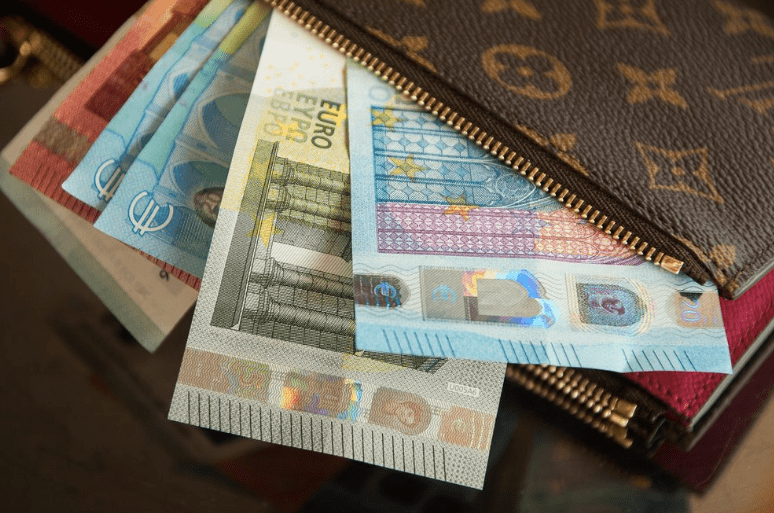How Pricing Strategy Shapes Your Business Model
When social entrepreneurs use the Business Model Canvas, they often run out of puff when they get to the bottom two boxes (Cost Structure and Revenue Streams).
Financials just don’t seem to be interesting, and so they get treated with the least possible care. This leads to lazy decision making, with the entrepreneur opting to do what’s been done before, so that more creative energy can go back into their Intent and Customer Segments boxes.
TDi co-founder Paul Steele said it well:
“One of the often missed opportunities for innovation is in pricing. We need to spend time to be creative in how we price our products and services.”
There is such a wide range of ways our pricing model can be structured, it shouldn’t be a boring decision.
Looking at some famous case studies, we see that an innovative approach to pricing was what fuelled their success.
Xerox
Xerox transformed themselves by enabling any organisation to own a photocopier.
In the early days of the technology, the price was prohibitively expensive, requiring a large outlay for a machine of unknown value.
Xerox’s solution?
Move to a leasing model.
An early pioneer of “Freemium”, Xerox offered the machine and the first few thousand copies per month for free, then each subsequent page was a few cents.
This did two things, it removed the main barriers and objections (businesses only paid for what they used), and got the office hooked on photocopying.
It’s a fair system, and the model was a thunderous success; to this day you’ll hear Americans use the term “Xeroxing”.
iTunes
We tend to forget it now, but iTunes’s payment structure permanently altered the music industry, and re-shaped how we consume new work from our favourite artists.
Back in the day, consumers had two choices; $30 for an album, or $5 for a single.
These were sold in physical units, which you had to buy from a shop.
Seems almost primitive.
Aside from the leap to owning files rather than discs, the cleverest part of iTunes model was probably the $1.69 price for each song.
This was accompanied by the “Freemium” approach of letting the customer hear a 30-second sample of the song, in order to make good purchase decisions.
The tech made music shareable, but the price made it accessible and appealing.
Customers greatly reduced their risk (try before you buy) and only paid for what they wanted. This meant buying 5-6 tracks from a new album rather than the full thing, then could go on to buy songs from new artists more speculatively, with the worst-case scenario now a perceived loss of $1.69
Another point to note, the $20 iTunes card didn’t equal a round number of songs, so the “leftover” credits encouraged customers to buy another card.
Simple, devious, effective.
Uber
The tech behind Uber is impressive, but it’s the pricing that really drives the unique value proposition.
What Uber’s pricing strategy gives the customer is the perception of choice; you can pay only $7 if you’re willing to ride-share with a random passenger (UberPool), or pay more for a fancier car (UberBlack).
The amount a passenger pays is also dependent on how busy the roads are (Surge Pricing), which is designed to incentivize a constant rebalancing of supply and demand (raising fare prices to attract more drivers, which lowers the oversupply of customers, thus restoring the prices)
Their payment format also fits their Value Proposition of convenience and simplicity; a completely cashless experience through PayPal.
This had created loyalty and goodwill from customers, who are no longer financially penalized for wanting to pay by card, like they are in regular taxis.
Book Depository
Two things are interesting about Book Depository’s prices.
Firstly, they are “Floating”, that is, they change day-to-day.
This encourages customers to keep returning to the site in order to see if it’s changed, and gives the perception of fairness (e.g. Aussie dollar improves this week, books become cheaper).
Secondly, the price includes “Free” shipping.
IIt’s not really free, it’s just built into the price of the book.
Book Depository and Amazon are the same company, but frame their prices differently.
For example, a book on Amazon might be $11 plus $13 for shipping (poor old Australia).
The same book on Book Depository could then be $24 plus free worldwide shipping, giving the perception of a better deal.
Netflix
Traditionally, Australians don’t pay for their TV usage.
Foxtel has proved popular in some areas, but the majority use Freeview.
“Why would you pay for TV?” crow the old guard of Aussies.
Always remember, if you use a service, but aren’t paying for it, you’re not the customer.
You’re the product.
Whereas Foxtel charge $40-80 per month on a locked in contract, Netflix has gone for an “All you can eat” pricing model.
Subscribers aren’t locked in, and can watch everything that’s on there; no upgrades to premium packages or other restrictions.
As a Freemium kicker, the first month is free.
This is designed to catch skeptics who don’t think they’ll use the service enough to justify the cost ($10-14).
Netflix are betting that in the first month, new customers will become hooked and form new habits, making the recurring purchase decision obvious.
Once you’ve become accustomed to content on demand, and with no ads, going back to Freeview feels painful.
Groupon
Groupon (or Scoopon, Daily Deals etc.) are essentially running a “Stock Option” pricing model. That is, customers pay a premium for the right, but not the obligation, to receive a particular service within a set date range.
For example, you can pay $39 and receive a massage usually priced at $89, as long as you claim it in the next two months.
This pricing model is clever, as both parties feel that they have won.
Customers get a perceived discount, and retailers get a guaranteed source of revenue (especially if customers don’t claim their purchases in the agreed time).
This pricing model changes how people shop online.
Customers are now loyal to the site (Groupon) and the discounts, rather than the individual service provider (the masseur).
Chivas Regal
A lot of us don’t really know what we’re doing when it comes to buying alcohol.
Not only is it subjective, but without tasting it, how can customers know the quality of what’s in the bottle?
It turns out there are a few things.
The first one is the label and packaging.
They say not to judge a book by its cover, but that’s exactly what happens.
Secondly, we gauge the quality based on the suggested retail price.
A $20 whiskey is suspicious.
A $100 whiskey discounted to $20 on Groupon is a bargain!
Since so many of us are like this, brands have started pricing themselves accordingly.
Chivas Regal for example, used to be cheap blended whiskey.
This wasn’t popular, so they made a change.
Not to the recipe or the quality of the product, but to the price and the advertising.
By doubling the price and heavily increasing their marketing spend, they transformed the perception of the brand, and sales jumped significantly.
This is a great example of price determining Value Proposition, even when rational economics suggests that it shouldn’t.
You might enjoy the series on the Business Model Canvas.
If you’d like to jump straight to a particular section, go to:
Overview: How To Use The Business Model Canvas
Desirability: Customer Segments, Value Proposition, Customer Relationships, Channels
Feasibility: Key Resources, Key Activities, Key Partners
Viability: Cost Structure, Revenue Streams








